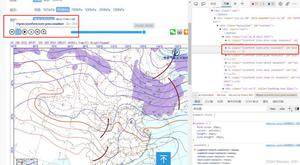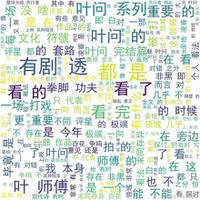Python爬虫如何遍历文档树

遍历文档树
1.直接子节点:.contents .children属性
.content
Tag的.content属性可以将Tag的子节点以列表的方式输出
#!/usr/bin/python3# -*- coding:utf-8 -*-
from bs4 import BeautifulSoup
html = """
<html><head><title>The Dormouse's story</title></head>
<body>
<p class="title" name="dromouse"><b>The Dormouse's story</b></p>
<p class="story">Once upon a time there were three little sisters; and their names were
<a href="http://example.com/elsie" class="sister" id="link1"><!-- Elsie --></a>,
<a href="http://example.com/lacie" class="sister" id="link2">Lacie</a> and
<a href="http://example.com/tillie" class="sister" id="link3">Tillie</a>;
and they lived at the bottom of a well.</p>
<p class="story">...</p>
"""
# 创建 Beautiful Soup 对象,指定lxml解析器
soup = BeautifulSoup(html, "lxml")
# 输出方式为列表
print(soup.head.contents)
print(soup.head.contents[0])
运行结果
[<title>The Dormouse's story</title>]<title>The Dormouse's story</title>
.children
它返回的不是一个列表,不过我们可以通过遍历获取所有的子节点。
#!/usr/bin/python3# -*- coding:utf-8 -*-
from bs4 import BeautifulSoup
html = """
<html><head><title>The Dormouse's story</title></head>
<body>
<p class="title" name="dromouse"><b>The Dormouse's story</b></p>
<p class="story">Once upon a time there were three little sisters; and their names were
<a href="http://example.com/elsie" class="sister" id="link1"><!-- Elsie --></a>,
<a href="http://example.com/lacie" class="sister" id="link2">Lacie</a> and
<a href="http://example.com/tillie" class="sister" id="link3">Tillie</a>;
and they lived at the bottom of a well.</p>
<p class="story">...</p>
"""
# 创建 Beautiful Soup 对象,指定lxml解析器
soup = BeautifulSoup(html, "lxml")
# 输出方式为列表生成器对象
print(soup.head.children)
# 通过遍历获取所有子节点
for child in soup.head.children:
print(child)
运行结果
<list_iterator object at 0x008FF950><title>The Dormouse's story</title>
相关推荐:《Python相关教程》
2.所有子孙节点:.descendants属性
上面讲的.contents和.children属性仅包含Tag的直接子节点,.descendants属性可以对所有Tag的子孙节点进行递归循环,和children类似,我们也需要通过遍历的方式获取其中的内容。
#!/usr/bin/python3# -*- coding:utf-8 -*-
from bs4 import BeautifulSoup
html = """
<html><head><title>The Dormouse's story</title></head>
<body>
<p class="title" name="dromouse"><b>The Dormouse's story</b></p>
<p class="story">Once upon a time there were three little sisters; and their names were
<a href="http://example.com/elsie" class="sister" id="link1"><!-- Elsie --></a>,
<a href="http://example.com/lacie" class="sister" id="link2">Lacie</a> and
<a href="http://example.com/tillie" class="sister" id="link3">Tillie</a>;
and they lived at the bottom of a well.</p>
<p class="story">...</p>
"""
# 创建 Beautiful Soup 对象,指定lxml解析器
soup = BeautifulSoup(html, "lxml")
# 输出方式为列表生成器对象
print(soup.head.descendants)
# 通过遍历获取所有子孙节点
for child in soup.head.descendants:
print(child)
运行结果
<generator object descendants at 0x00519AB0><title>The Dormouse's story</title>
The Dormouse's story
3.节点内容:.string属性
如果Tag只有一个NavigableString类型子节点,那么这个Tag可以使用.string得到子节点。如果一个Tag仅有一个子节点,那么这个Tab也可以使用.string方法,输出结果与当前唯一子节点的.string结果相同。
通俗点来讲就是:如果一个标签里面没有标签了,那么.string就会返回标签里面的内容。如果标签里面只有唯一的一个标签了,那么.string也会返回里面的内容。例如:
#!/usr/bin/python3# -*- coding:utf-8 -*-
from bs4 import BeautifulSoup
html = """
<html><head><title>The Dormouse's story</title></head>
<body>
<p class="title" name="dromouse"><b>The Dormouse's story</b></p>
<p class="story">Once upon a time there were three little sisters; and their names were
<a href="http://example.com/elsie" class="sister" id="link1"><!-- Elsie --></a>,
<a href="http://example.com/lacie" class="sister" id="link2">Lacie</a> and
<a href="http://example.com/tillie" class="sister" id="link3">Tillie</a>;
and they lived at the bottom of a well.</p>
<p class="story">...</p>
"""
# 创建 Beautiful Soup 对象,指定lxml解析器
soup = BeautifulSoup(html, "lxml")
print(soup.head.string)
print(soup.head.title.string)
运行结果
The Dormouse's storyThe Dormouse's story
以上是 Python爬虫如何遍历文档树 的全部内容, 来源链接: utcz.com/z/523658.html




